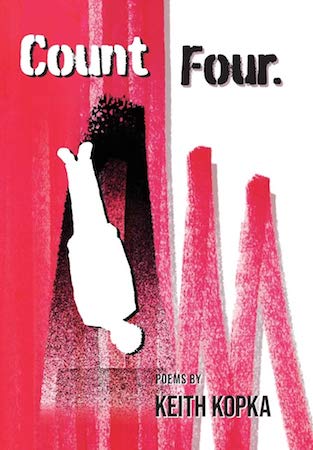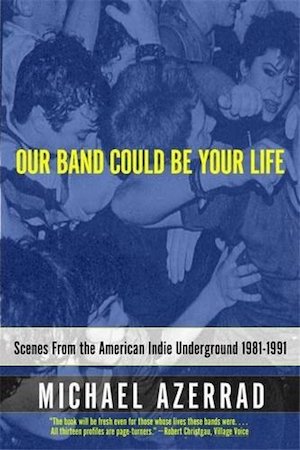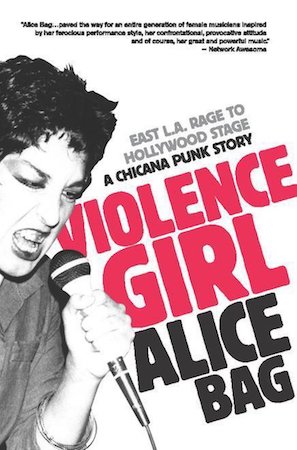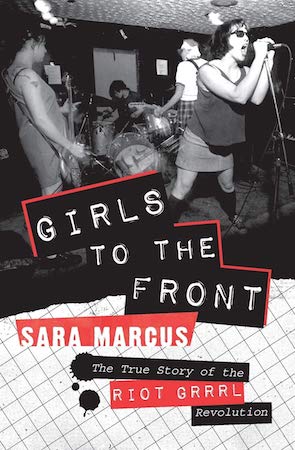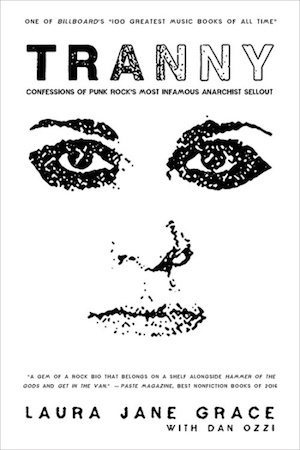Electric Lit relies on contributions from our readers to help make literature more exciting, relevant, and inclusive. Please support our work by becoming a member today, or making a one-time donation here.
.
From the first time I heard Dee Dee Ramone shout the count-in to “Blitzkrieg Bop,” I was hooked. I couldn’t get my hands on the records fast enough. Soon, I began not only listening to punk music but also creating it myself. Punk became an opportunity to push myself socially and artistically, leading me to spend the better part of 20 years playing in punk bands up and down the East Coast.
Despite the stereotypes of punks as troglodyte, apathetic, and uneducated, as well as the reputation of punk lyrics as “simple,” punk rock music actually has a strong literary tradition. Early punk artists like Patti Smith, Richard Hell, and Jim Carroll are all deeply connected to the New YorkY school of poetry, and it’s this tradition that I’ve engaged with in my first collection of poems, Count Four. It’s a highly personal book, and I explore not only my time playing punk music but also the liminal spaces on society’s fringe, the people who exist in these spaces, and the ways in which identity is constructed through social experience. The goal of Count Four is to challenge these experiences and identities, and to shine a light on the dangerous hypocrisy that often inhabits our personal and social mythologies.
However, I am far from the first punker to take a step back and interrogate their surroundings using the written word. With this long tradition in mind, let’s take a look at some of the people who have done it best.
Our Band Could Be Your Life By Michael Azerrad
Michael Azerrad’s book takes its name from the opening line of a Minutemen song called “History Lesson—Part II.” This line, like Azzerad’s stunning chronicle of punk and D.I.Y culture, summarizes the essential spirit of punk music in general—creating art out of necessity, because it is what one needs to do. While many other punk histories focus on the salacious and sordid details of sex, drugs, and rock ‘n’ roll, Azerrad tells the story of a community of bands who were dedicated to passionate artistic and sonic exploration in order to create meaningful music outside of mainstream conventions. This book is the essential history of the underground that would eventually become the “mainstream.”

Get in the Van: On the Road With Black Flag by Henry Rollins
This journal-style memoir of Henry Rollins’ time spent on tour as the singer of Black Flag is more than anecdotal reveries of “life on the road.” It is a revealing look into the monotony, the poverty, and the violence that plague this often-idealized wanderlust lifestyle. Get in the Van is filled with Rollins’ trade-mark honesty. Through his candid observations, the book documents Rollins’ metamorphosis from defiant rebel to embittered nihilist. But this memoir is more than just one man’s story. Get in the Van is representative of so many young people’s experiences with the self-fulfilling prophecy of alienation that is often at the core of the punk ethos.
Violence Girl: East L.A. Rage to the Hollywood Stage, A Chicana Punk Story by Alice Bag
Alice Bag, born Alicia Armendariz, was one of the earliest frontwomen in punk rock. Bag’s memoir chronicles her time in the punk scene and the sexism and violence that she battled, as well as the community that she found in the formation of her band the Bags. On a societal level, it is also the story of how Mexicans and Mexican American culture played an important role in the growth of punk rock, especially on the West Coast.
American Hardcore: A Tribal History by Steven Blush
Hardcore punk music is a subculture within a subculture. If the intensity of punk rock writ large is the metaphorical equivalent of walking across hot coals with one’s bare feet, hardcore is taking that same walk across hot coals AND razor wire. Contemporary hardcore music is heavier, faster, louder, and more intense than its genus categorization. Steven Blush’s book documents the emergence of this music through interviews, along with his written accounts of first-hand experiences with bands like the Bad Brains and Minor Threat. Hardcore music is one of the most complicated, misunderstood, and controversial genres of music, and this book introduces readers to how and where it all began.
Girls to the Front: The True Story of the Riot Grrrl Revolution by Sara Marcus
Riot Grrrl—created in the early 90s and embodied in bands like Bikini Kill, Bratmobile, and Heavens to Betsy—was a complicated blend of socio-political awareness, fashion, performance art, journalism, straight-up activism, and musical expression. In her book, Sara Marcus explores the complicated intersections of these different elements within the subgenre. The book is an essential portrait of one of the most largely ignored feminist movements in America, and it is essential reading for a new generation who is facing an arguably even more complicated world of gendered subjugation and exploitation.
Tranny: Confessional of Punk Rock’s Most Infamous Anarchist Sellout by Laura Jane Grace with Dan Ozzi
This memoir explores the musical and personal life of Laura Jane Grace, the lead singer of Against Me! who recently, and very publicly, came out as transgendered. This transition is an essential part of her story, but the power of this narrative to bestow epiphany on readers comes from Grace’s skilled retelling of her journey as a punk musician, and the hypocrisy that she encountered in the scene’s supposed “freedom.” This backdrop of sanctimonious myopia allows Grace to explore her dysphoria in a unique way that illustrates not only personal growth and courage but also the ways in which the constructs of our individual worlds, gender-based or otherwise, hold us back and keep us feeding into the systems that are ultimately put in place to control us.
Please Kill Me: The Uncensored Oral History of Punk by Legs McNeil and Gillian McCain
Legs McNeil and Gillian McCain start at the beginning. This alone is enough to make the book an essential read. They tell the simple story of how a bunch of messed up, unstable people pooled their limited talents to make some noise. Against all odds, these misfits made something beautiful and lasting: punk rock. This book is a portrait of the people behind the punk “movement.” It explores their humanity without the kind of exploitation that led to Sid Vicious’s face being printed on t-shirts and then sold in Hot Topics across America. Instead, this is the often ugly and very unromantic portrayal of, as Richard Hell puts it, the “blank generation,” who can “take it or leave it each time.” These are stories of death, love, friendship, fights, parking tickets, and bodily fluids. This book is, in a word, “authentic,” for better or for worse, and you can’t get much more punk than that.

